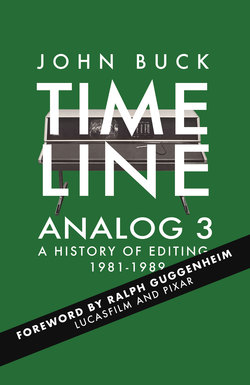Читать книгу Timeline Analog 3 - John Buck - Страница 11
На сайте Литреса книга снята с продажи.
FILM 5
ОглавлениеDespite the advances in Lucasfilm's work there was a critical road block ahead for any group using an electronic medium. Films were still recorded to film. The Rank Cintel Mark III had improved the quality of film to tape transfers but nothing could change the difference between film's 24fps recording rate and NTSC videotape's 30 fps (or PAL's 25fps). When 24 fps film is transferred to NTSC video, the closest it can get to 30 fps is 29.97 fps.
Engineers and editors alike had been cutting film projects electronically using ways to circumvent the difference in the frame rate of film and video but nobody had been truly successful. If the issue could be resolved, a huge reward lay waiting for the post-production industry. CFI engineer Don Kravits (photo below) and editor Art Schneider wanted to solve the 3:2 problem. Kravits recalls:
We started to work on a program to convert the 24 frames per second rate of film rushes to 30 frames of video.
They created a software program to convert film material sent from a Rank telecine in 24 fps to ¾” videotape at 30 fps, obviating the problems of 3:2 pull down. Editor Art Schneider recalls:
We couldn't come up with a clever name for the film program but we were developing the software in one of CFI's offline edit rooms called Edit Five, so we figured that would be a good name for this new program that we then called Film-5.
The new Film 5 system used either the factory film key numbers or the laboratory applied edge code numbers. Kravits documented the task for his peers.
It is not easy to convert film to tape and back again without a massive and complex software and/or hardware program designed to accurately determine the precise film frame on which to cut with respect to any given videotape frame.
At the same time, others were tackling the same quandary.
